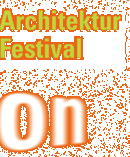

 |
| Rosenthal Center for Contemporary Art |

 |
 |
|
 |
|
HOLODECK.at SPLITTERWERK Walter Stelzhammer Cuno Brullmann HALLE 1 Baumschlager-Eberle Auböck + Kárász Bruno Spagolla Dietmar Feichtinger Thomas Forsthuber Rainer Köberl Günther Domenig Zaha Hadid Zechner & Zechner BEHF "Turn On Partner" |
The first freestanding building for The Contemporary Arts Center, founded in Cincinnati in 1939 as one of the first institutions in the United States dedicated to the contemporary visual arts. The new CAC building provides spaces for temporary exhibitions, site-specific installations, and performances, but not for a permanent collection. Other program elements include an education facility, offices, art preparation areas, a museum store, a cafe and public areas. To draw in pedestrian movement from the surrounding areas and create a sense of dynamic public space, the entrance, lobby and lead-in to the circulation system are organized as an Urban Carpet. Starting at the corner of Sixth and Walnut, the ground curves slowly upward as it enters the building, rising to become the back wall. As it rises and turns, this Urban Carpet leads visitors up a suspended mezzanine ramp through the full length of the lobby, which during the day functions as an open, day-lit, "landscaped" expanse that reads as an artificial park. The mezzanine ramp continues to rise until it penetrates the back wall, on the other side of which it becomes a landing at the entrance to the galleries. Jigsaw Puzzle In contrast to the Urban Carpet, which is a series of polished, undulating surfaces, the galleries are expressed as if they had been carved from a single block of concrete and were floating over the lobby space. Exhibition spaces vary in size and shape, to accommodate the great range of scales and materials in contemporary art. Views into the galleries from the circulation system are unpredictable, as the stair-ramp zigzags upward through a narrow slit at the back of the building. Together, these varying galleries interlock like a three-dimensional jigsaw puzzle, made up of solids and voids. Skin/Sculpture The building's corner situation led to the development of two different, but complementary, facades. The south facade, along Sixth Street, forms an undulating, translucent skin, through which passers-by see into the life of the Centre. The east facade, along Walnut, is expressed as a sculptural relief. It provides an imprint, in negative, of the gallery interiors. Zaha Hadid Arch. Zaha Hadid is an architect who consistently pushes the boundaries of architecture and urban design. Her work experiments with new spatial concepts intensifying existing urban landscapes in the pursuit of a visionary aesthetic that encompasses all fields of design. Her central concerns involve a simultaneous engagement in practice, teaching and research. Hadid studied architecture at the Architectural Association and was awarded the Diploma Prize in 1977. She then became a partner of the Office for Metropolitan Architecture, taught at the AA with OMA collaborators Rem Koolhaas and Elia Zenghelis, and later led her own studio at the AA until 1987. Since then she held the Kenzo Tange Chair at the Graduate School of Design, Harvard University; the Sullivan Chair at the University of Illinois, School of Architecture, Chicago; guest professorships at the Hochschule für Bildende Künste in Hamburg, the Knolton School of Architecture, Ohio and the Masters Studio at Columbia University, New York. In addition, she was made Honorary Member of the American Academy of Arts and Letters, Fellow of the American Institute of Architecture and Commander of the British Empire 2002, Laureate of the Pritzker Architecture Prize 2004, London Architect of the Year of the London Architectural Biennale 2004. Since 2001 she is Professor at the University of Applied Arts in Vienna, Austria. Zaha Hadid's built works include Vitra Fire Station, Land Formation-One, Bergisel Ski-Jump, and the Hoenheim Nord (Strasbourg) Tram Station. The Practice is currently on site with: the "Central Plant Building" for BMW in Leipzig, Germany; the National Centre of Contemporary Arts "MAXXI" in Rome, Italy; the Ordrupgaard Museum extension in Copenhagen, Denmark; the "Phaeno Science Centre" in Wolfsburg, Germany; a visitor's centre and cellar tasting room for the winery Lopez De Heredia Vina Tondonia; a major bridge structure in Abu Dhabi; a housing project "Spittelau Viaducts" in Vienna, Austria; a new Opera House for Guangzhou, China. Her competition wins include: the New EuskoTren Headquarters in Durango (2004), a new Mediatheque in Pau Pyrenees (2004), an office tower and residential housing complex in Milan "Milano Fiera CityLife" (2004), the Memorial Walk "Boulevard der Stars" for the Berlin Film Academy, Berlin (2004), the new Riverside Transport Museum in Glasgow (2004), the new CMA CGM Headquarters in Marseille (2004), most recently in 2005, the Neues Stadt-Casino Basel, the Architecture Foundation's new centre for architecture and the London Aquatics Centre - both in London. The Practice completed master plans for "One North" in Singapore (currently in construction), a Master Plan for Bilbao's "Zorrozaurre" district in Spain and a Master Plan for Beijing's "Soho City" in China. Weiterführende Links: www.zaha-hadid.com Projektliste in der nextroom architektur datenbank |
|||
|
||||